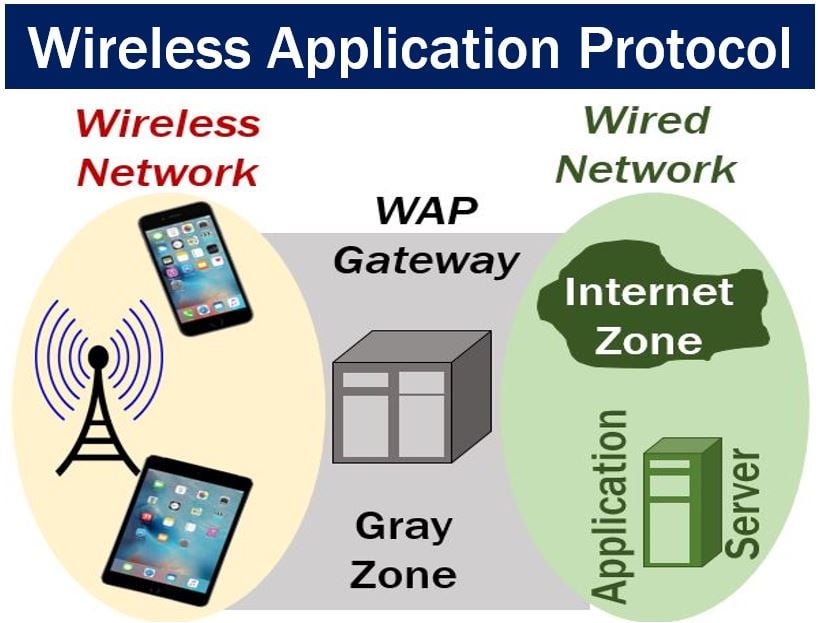Wireless application protocol (WAP) is a suite of emerging standards to enable the viewing of mobile devices such as mobile telephones and tablets, i.e. mobile Internet applications. The wireless application protocol was created as a result of the WAP Forum that was formed in June 1997 by Nokia, Motorola, Ericsson, and Unwired Planet. The WAP Forum was created with the aim of assisting the convergence of two rapidly-growing network technologies:
- Wireless communications
- The Internet
The convergence is based on the dramatic effect of e-business over the Internet and the rapidly-growing number of people with mobile telephones and tablets.
These two technologies are expected to have a massive impact on current e-business practice – their combination will create huge market potential.
Before the introduction of wireless application protocol, mobile service providers had limited opportunities to offer interactive data services.

Wireless application protocol – several components
The wireless application protocol standards consist of a number of architecture components, including:
- Wireless Application Environment (WAE)
- Wireless Transport Layer (WTP)
- Wireless Session Layer (WSL)
- Wireless Transport Layer Security (WTLS)
These features and components together define how mobile phones and tablets – wireless data handsets – communicate over the wireless network, and how services and content are delivered.
With the WAP standards, a mobile phone, for example, can establish a connection with a WAP-compliant wireless infrastructure, request and receive the services and content, and present them to the consumer (end user).
This WAP-compliant wireless infrastructure may include the server side infrastructure, the handset, the application server, the Web server, and the telecommunication company (network operator)
The convergence of the e-business over the Internet and wireless technologies has led to emerging and rapidly-growing wireless e-business, including mobile commerce.
E-business has attracted increasing attention of business leaders and academic researchers. Being able to do e-business anytime and anywhere started off as a reality and has become a basic business necessity.
However, due to the wireless’ limitations, conducting e-business in the wireless environment is more difficult than in the wired world.
